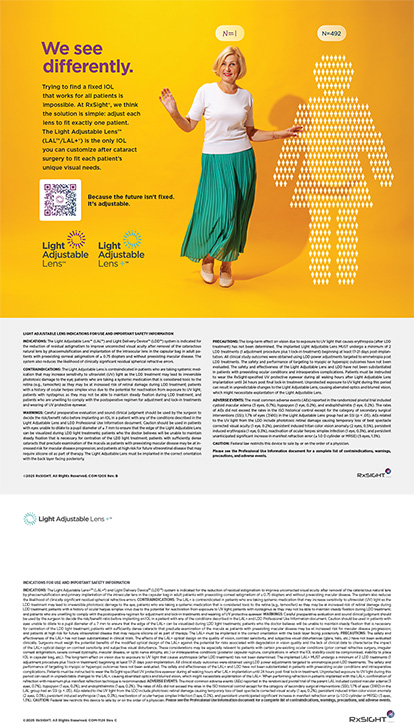Continuous curvilinear capsulorhexis (CCC) is one of the most important steps for successful phacoemulsification and IOL implantation.1 The main cause of an errant capsular tear is a shallowing of the anterior chamber, with a subsequent excursion of the rhexis' peripherally along the path of least resistance. Thus, the surgeon should ensure that the anterior capsule is flat during the entire CCC procedure. This article describes measures to follow to complete a successful surgery.
SURGICAL STEPS
Incisions
First, the surgeon needs to ensure that the speculum or drape is not causing any unnecessary pressure on the orbit and thereby shallowing the chamber. Next, he should make sure a proper main incision is constructed so that the chamber does not inadvertently shallow when the wound is decompressed. A surgeon needs to make a good shelved, self-sealing wound that is constructed appropriately for the type of eye that he is treating. If the surgeon is operating on an eye that is very myopic or long, he should make the main incision slightly shorter than average (about 2 mm) to prevent putting undue pressure on the wound with the Utrata forceps. This step is important, because the chamber tends to be deep and one needs to angle down to reach the capsule. Alternatively, a longer-than-average incision will help stabilize the chamber in a more hyperopic or shorter eye.
Injecting Viscoelastic
It is necessary to be certain that the anterior chamber is completely filled with viscoelastic, either dispersive or cohesive, before performing the rhexis. Refill the anterior chamber with viscoelastic as necessary. If the chamber is particularly shallow, the surgeon may opt for a viscoadaptive viscoelastic such as Healon 5 (Advanced Medical Optics, Inc., Santa Ana, CA) to aid in the deepening and stabilizing of the chamber. Of note, when performing a CCC with Healon 5, the rhexis tends to want to turn inward, and thus an errant tear is less likely to occur. The surgeon should account for this and lead the rhexis in the direction needed more frequently or use a small amount of balanced salt solution directly on top of the rhexis as described by Steve A. Arshinoff, MD, FRSCS, of Toronto (ultimate soft-shell technique).2
Managing the Rhexis
It is imperative to regrasp the rhexis frequently with any procedure, at least every 90° or less, and the surgeon must ensure that he is holding it close to the edge of the flap on the free edge. Viscoelastic can also be used to direct the leading capsular flap into an optimal direction and position.
If the pupil is small or the iris is floppy and the surgeon decides that iris hooks or pupil rings need to be used, it is easier to insert these devices before commencing the rhexis.
Capsular Staining
If the lens is hypermature or white, a surgeon may want to use a capsular staining dye to guarantee visibility of the anterior capsule during the procedure. Out of the many staining techniques described,3 I prefer to use trypan blue in a small aliquot painted directly onto the anterior capsule underneath some viscoelastic. Also, if there appears to be any positive pressure produced by the contents of a hypermature lens, it is beneficial to decompress the lens with a 25-gauge needle inserted into the anterior capsule prior to beginning a CCC in order to avoid the Argentinean flag sign (ie, capsule tearing centrally end to end).4 In this case, surgeons can also tamponade the capsule with Healon 5.
CONCLUSION
The key to avoiding a rhexis tear is to recognize and avoid running into problems and to use an armamentarium of techniques and technologies available to make performing a capsulorhexis a success. If one follows the steps reviewed previously, you should be able to avoid or effectively deal with any potential problems during CCC.
Rosa Braga-Mele MEd, MD, FRCSC, is Associate Professor at the University of Toronto, Director of the Cataract Unit at Mt. Sinai Hospital and Director of Clinical Research at the Kensington Eye Institute in Toronto, Canada. She acknowledged no financial interest in the products mentioned herein. Dr. Braga-Mele may be reached at (416) 462-0393; rbragamele@rogers.com.


